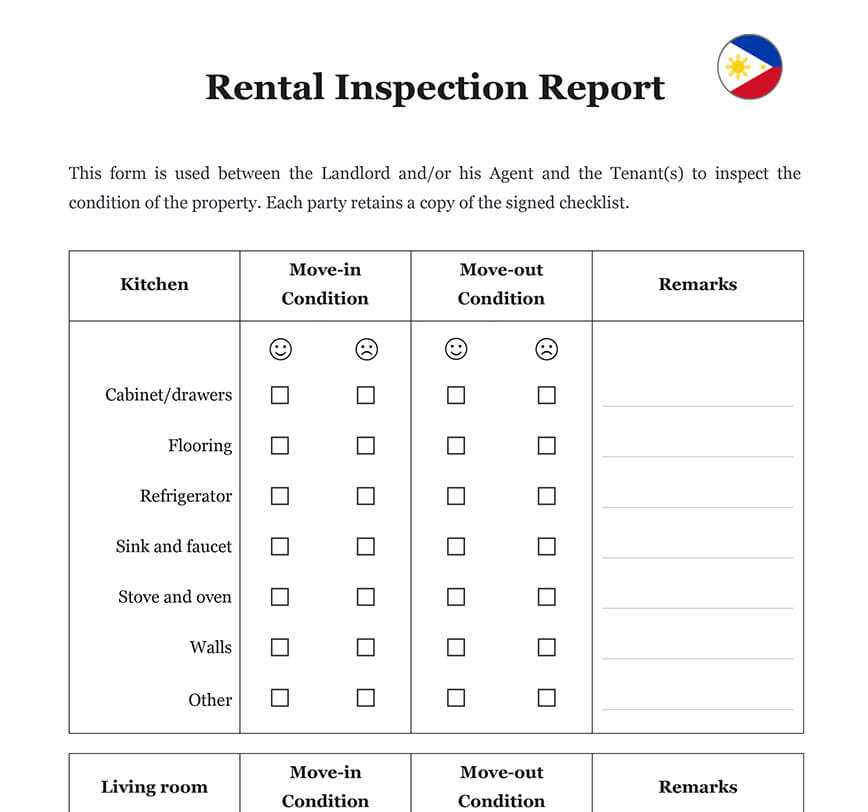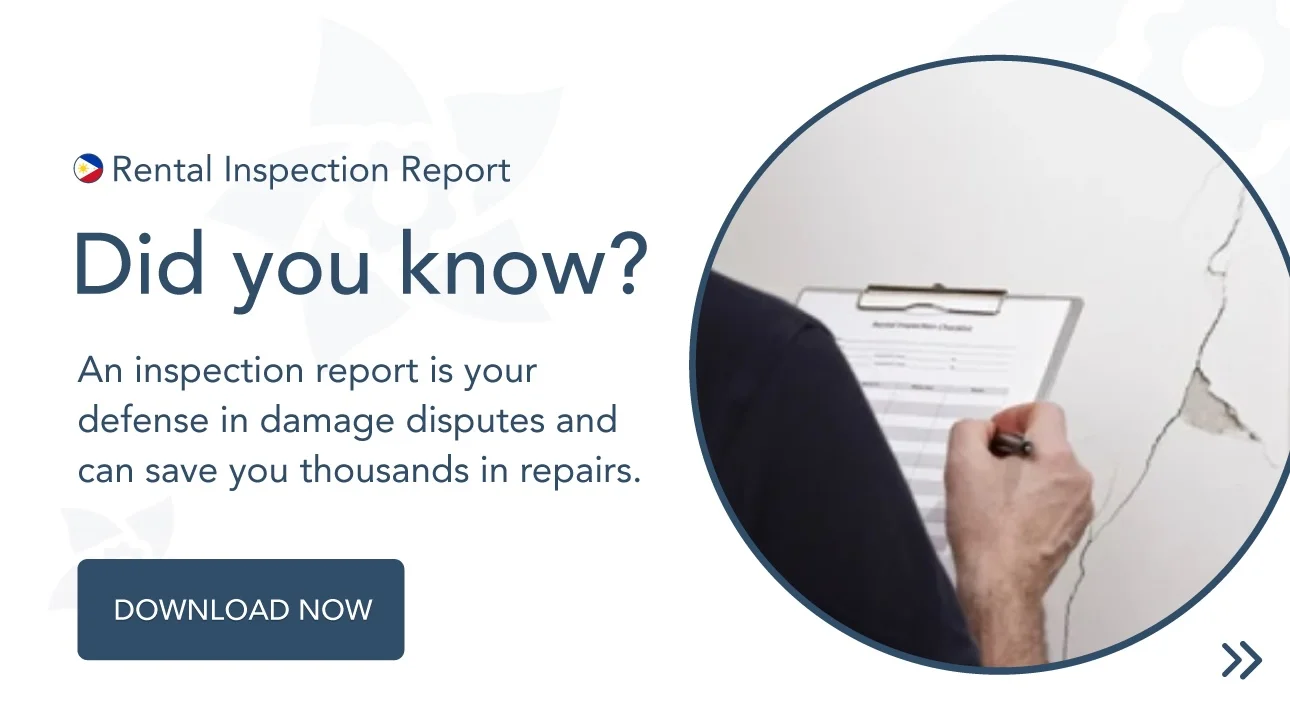Ready to use legal template
Work on without any hassle
Compliant with Filipino law
Ready to use legal template
Work on without any hassle
Compliant with Filipino law
Home › Rent your property › Rental inspection report
Learn more about Rental Inspection Report in Philippines
To protect your property, use a Rental Inspection checklist when renters move in and out. The owner or property management uses a rental inspection report or checklist to legal document the condition of a unit before and after the tenant moves in. This Rental Inspection Report might help you secure your villa, house, condominium, or apartment. The goal is to document any property damage that occurs both before and after the rental. This document also informs the owner or property management of any repairs that the previous renter was accountable for. following the rental The signed checklist is kept by each partner. Finally, a Rental Inspection report will allow you to see the present condition of your rental property and organize the status of each room prior to and after the rental. The signed checklist is kept by each partner.
Table of contents
-
Why are Rental Inspections important?
-
What does the tenancy checklist include?
-
What to look for in a tenancy inspection?
-
How to notify tenants about Rental Inspection?
-
How often can a landlord inspect a Rental Property?
-
Can a tenant refuse landlord inspection?
-
What if damages are caused by the tenant?
Why are Rental Inspections important?
1. To ensure that your tenants are adhering to the agreed-upon rules
First and foremost, ensure that you mention in the contract the agreed-upon expectations for behavior and property upkeep. Because no two renters are the same, establish a set of agreed-upon guidelines or expectations. If this is a family neighborhood, you can stipulate that the renters must keep noise to a minimal after a certain period (say, 9 p.m.) to prevent bothering the other neighbors. You might additionally specify that renters are responsible for maintaining the rental unit’s grounds, front and/or backyard.While landlords expect tenants to be carefully screened, even the finest tenants might have difficulties, become overburdened, or thoughtless. To encourage renters to keep the rental property in good condition, as a landlord, you should inform them that frequent property inspections will take place. Maintain a consistent schedule, such as once a month or every other month at a certain time, so that renters may prepare for the site visit.
2. To ensure that you, as a landlord, are serving the needs of your renters
The landlord-tenant contract is a two-way street. You must also ensure that you are upholding your half of the agreement by ensuring that the house you are renting out is clean, safe, and a pleasant place to live. Regular property inspections can assist you in identifying concerns that, if not handled, may create difficulties later. Because Seattle is a generally wet city, rental houses are prone to leaks and water damage. Property inspections can be an useful place to discuss repair problems with renters.
3. To avoid major issues in the future
Rental Property issues might arise as a result of normal wear and tear. By doing frequent Rental Property Inspections, you may detect these issues before they become costly. Weather can cause small harm to your Rental Property that can lead to larger problems. A minor leak during the rainy season may quickly become a major issue, resulting in damaged pipes, water damage, property flooding, or mold development if not remedied. Look for damage that renters must repair (unhinged doors, shattered windows, shredded baseboards, etc.) as well as damage/issues that you must solve (leaking roof, clogged outside drains, irregular garbage collection, etc.).
4. To provide you with information on your renters' behavior
A Property Inspection may provide you with information on how each renter utilizes your Rental Property. God forbid they’re utilizing it for illicit purposes. The clues you find during your Property Inspection might help you determine whether your renters are involved in criminal behavior or drug usage. Tenants that have hoarding issues will become visible over time, and their belongings may spill over into communal spaces, causing tremendous inconvenience to other neighbors. Routine checks can detect them early on.
5. To make landlord-tenant communication easier
You may be a landlord who lives in or near your Rental Property, or you may live farther away and so rely on a property management firm to organize your frequent Rental Property Inspections. In any event, frequent rental property inspections provide a forum for renters to discuss their requirements to landlords and landlords to reaffirm their restrictions to tenants. Both parties can work together to make modifications and ensure that the Rental Property is a safe and healthy place to live.
What does the tenancy checklist include?
Every checklist should include the necessities as well as details specific to each rental property.
There are a few elements to bear in mind while establishing a checklist to define the status of a rental property:
| ➤ Tenant's Name |
| ➤ The tenant's address, including the unit number |
| ➤ The move-in date |
| ➤ Date of Departure (When Occurs) |
| ➤ Move-In Inspection Date -Move-Out Inspection Date -Tenant Signature (When Occurs) |
| ➤ Landlord and Tenant Signatures |
| ➤ The condition of each room in the rental unit at the time of move-out |
| ➤ The state of outdoor spaces at the time of move-in, such as the front porch |
| ➤ The condition of outside areas such as the front porch at the time of move-out |
| ➤ All smoke and carbon monoxide alarms are functional |





